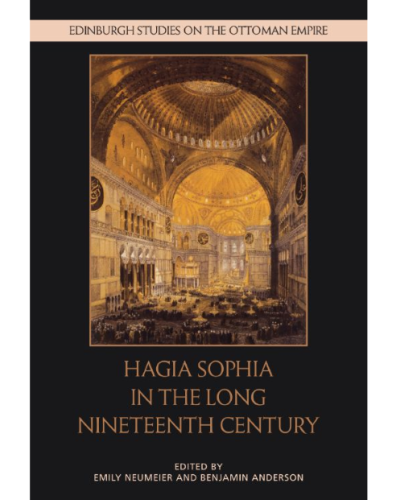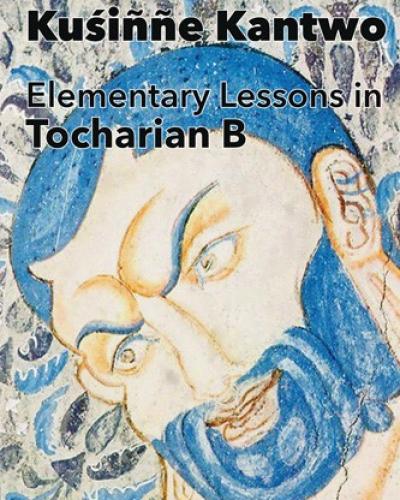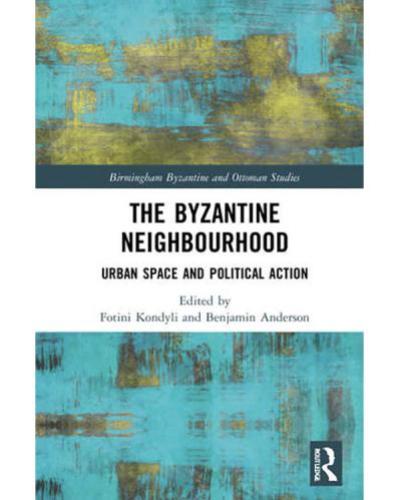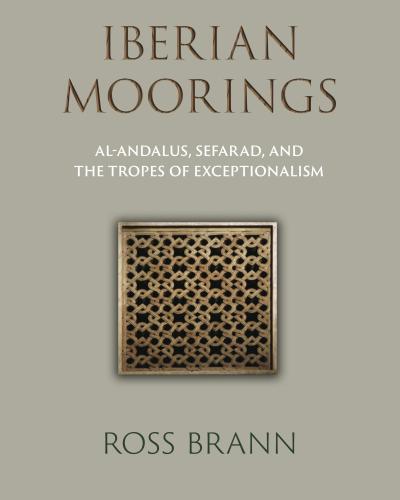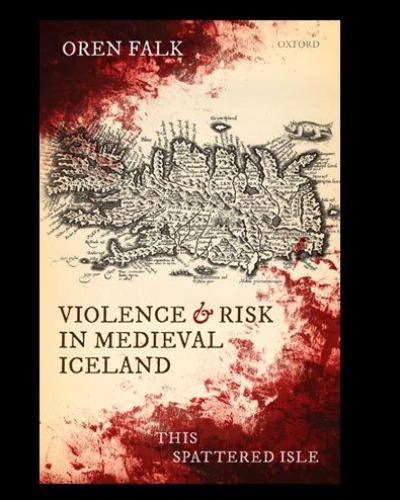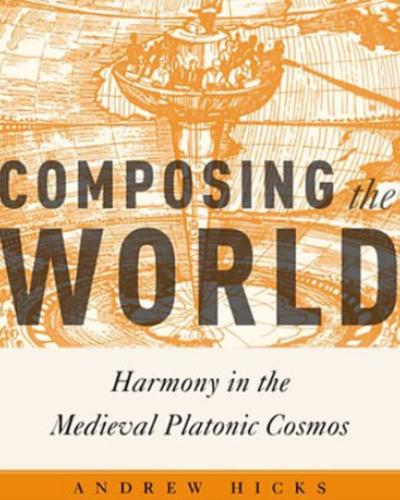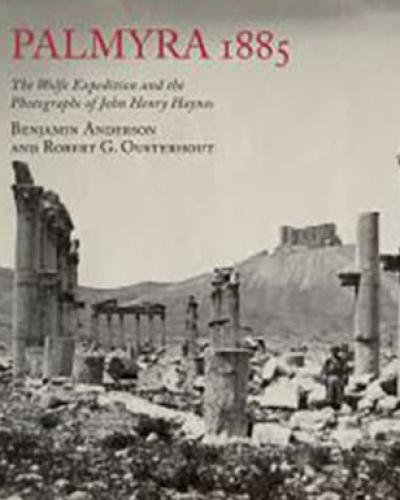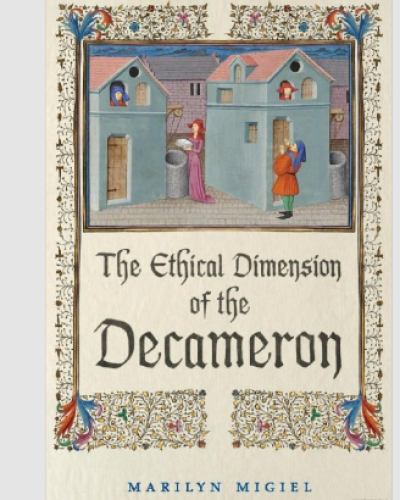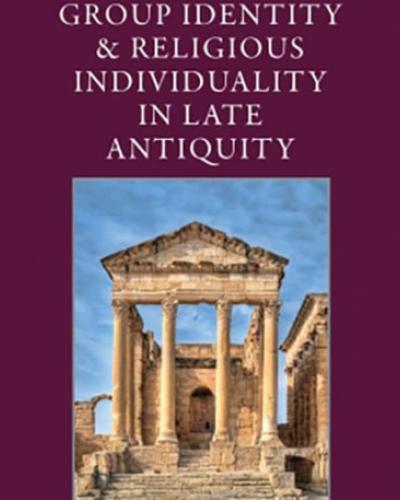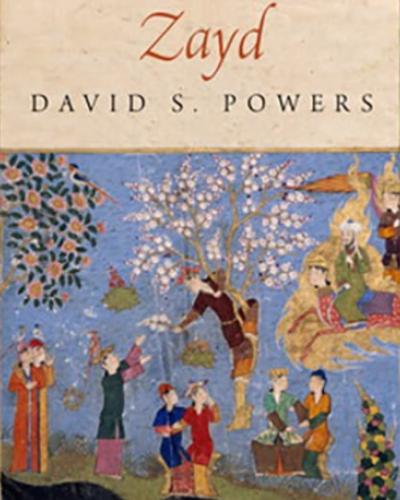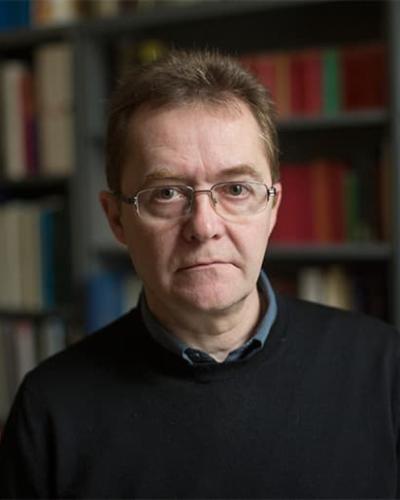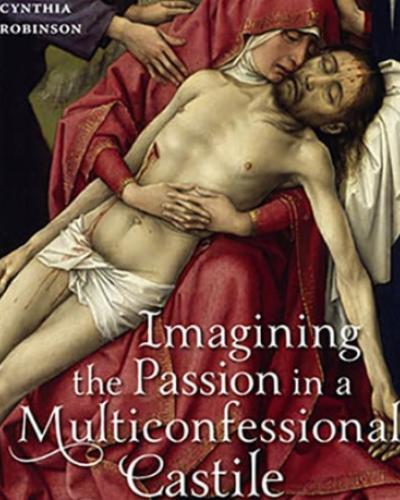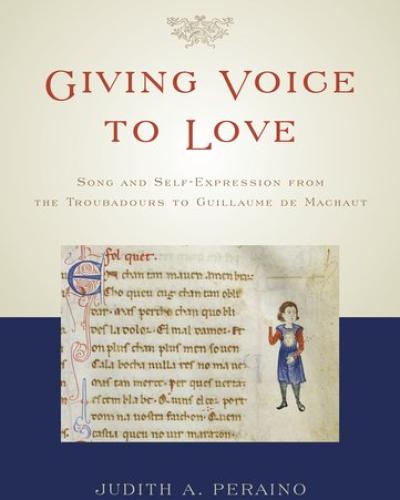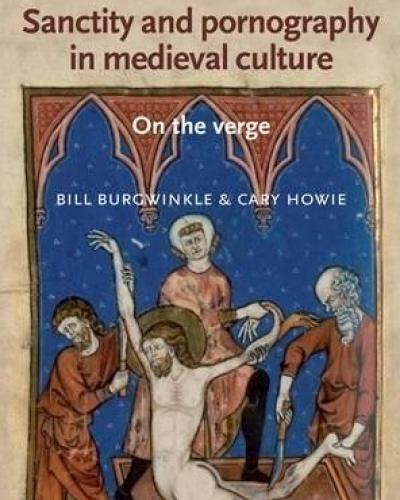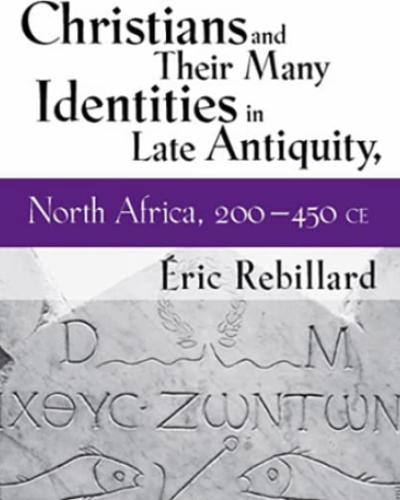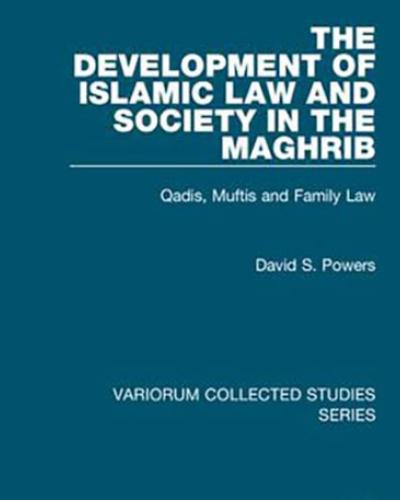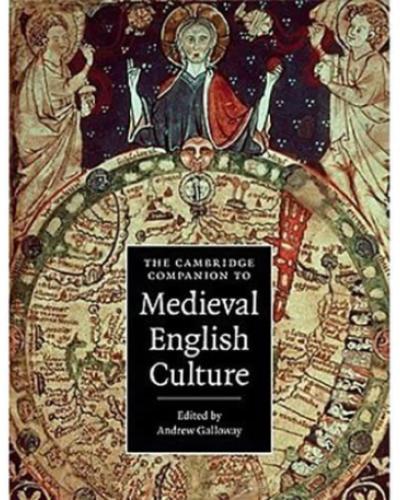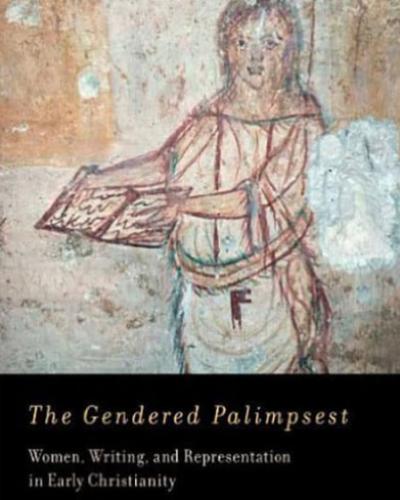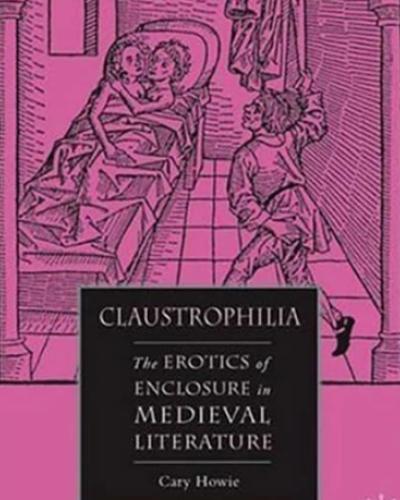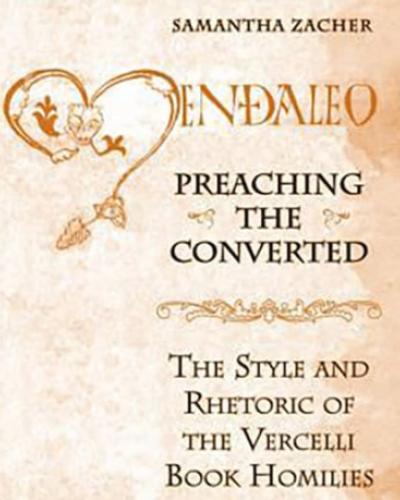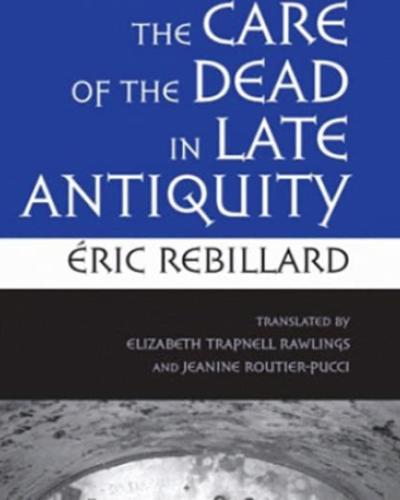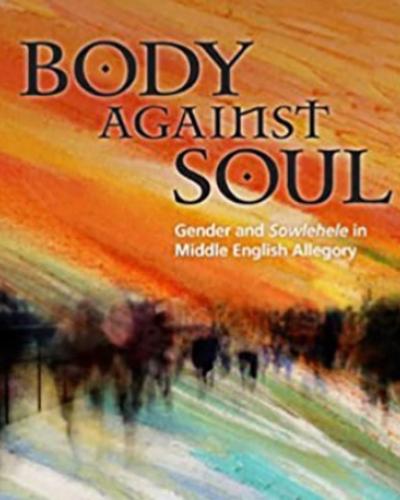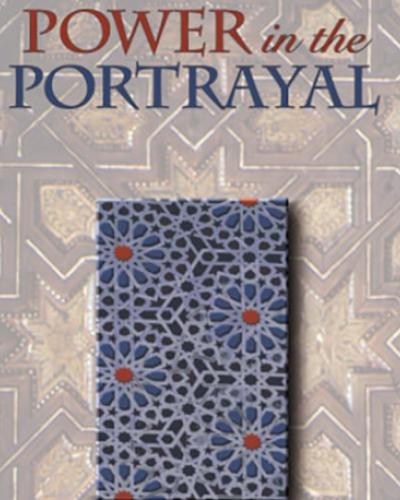Medieval Studies Faculty Books
Slaves of God: Augustine and Other Romans on Religion and Politics
Title:
Slaves of God: Augustine and Other Romans on Religion and Politics
Author:
Toni Alimi
Publisher:
Princeton University Press
Year:
2024
Augustine believed that slavery is permissible, but to understand why, we must situate him in his late antique Roman intellectual context. Slaves of God provides a major reassessment of this monumental figure in the Western religious and political tradition, tracing the remarkably close connections between Augustine’s understanding of slavery and his broader thought.
Augustine is most often read through the lens of Greek philosophy and the theology of Christian writers such as Paul and Ambrose, yet his debt to Roman thought is seldom appreciated. Toni Alimi reminds us that the author of Confessions and City of God was also a Roman citizen and argues that some of the thinkers who most significantly shaped his intellectual development were Romans such as Cicero, Seneca, Lactantius, and Varro—Romans who had much to say about slavery and its relationship to civic life. Alimi shows how Augustine, a keen and influential student of these figures, related chattel slavery and slavery to God, and sheds light on Augustinianism’s complicity in Christianity’s long entanglement with slavery.
An illuminating work of scholarship, Slaves of God reveals how slavery was integral to Augustine’s views about law, rule, accountability, and citizenship, and breaks new ground on the topic of slavery in late antique and medieval political thought.
Hagia Sophia in the Long Nineteenth Century
Title:
Hagia Sophia in the Long Nineteenth Century
Editors:
Emily Neumeier and Benjamin Anderson
Publisher:
Edinburgh University Press
Year:
2024
Uncovers a diversity of local encounters with Hagia Sophia in the late Ottoman Empire
- Examines the "biography" of a single monument from multiple points of view
- Nine chapters present a variety of methodological approaches drawn from the fields of history and art history
- Emphasis on local or non-traditional discourses in the Ottoman Empire and beyond
- Considers the physical changes to the structure, decoration and surroundings of Hagia Sophia
- Opens new avenues of research for readers interested in alternative accounts of modernity
Hagia Sophia—a building whose domes have defined Istanbul’s skyline for over 1500 years—has led many lives. Initially a church, subsequently a mosque, then a museum, the structure is today a monument of world heritage, even as its official status remains contested. Hagia Sophia’s global fame took shape during the long nineteenth century, when Europeans "discovered" its architectural significance. But what role did local actors play in the creation of Hagia Sophia as a modern monument?
This book seeks out the audiences of this building beyond its Western interpreters, from Ottoman officials to the diverse communities of Istanbul. Chronologically bracketed by the major renovation of the structure in the 1740s and its conversion into a museum in 1934, this volume traces the gradual transformation of Hagia Sophia within the Ottoman imaginary from imaret (mosque complex) to eser (monument); that is, from lived space to archaeological artifact.
Is Byzantine Studies a Colonialist Discipline? Towards a Critical Historiography
Title:
Is Byzantine Studies a Colonialist Discipline? Towards a Critical Historiography
Editors:
Benjamin Anderson and Mirela Ivanova
Publisher:
Penn State University Press
Year:
2023
Is Byzantine Studies a colonialist discipline? Rather than provide a definitive answer to this question, this book defines the parameters of the debate and proposes ways of thinking about what it would mean to engage seriously with the field’s political and intellectual genealogies, hierarchies, and forms of exclusion.
In this volume, scholars of art, history, and literature address the entanglements, past and present, among the academic discipline of Byzantine Studies and the practice and legacies of European colonialism. Starting with the premise that Byzantium and the field of Byzantine studies are simultaneously colonial and colonized, the chapters address topics ranging from the material basis of philological scholarship and its uses in modern politics to the colonial plunder of art and its consequences for curatorial practice in the present. The book concludes with a bibliography that serves as a foundation for a coherent and systematic critical historiography. Bringing together insights from scholars working in different disciplines, regions, and institutions, Is Byzantine Studies a Colonialist Discipline? urges practitioners to reckon with the discipline’s colonialist, imperialist, and white supremacist history.
In addition to the editors, the contributors to this volume include Andrea Myers Achi, Nathanael Aschenbrenner, Bahattin Bayram, Averil Cameron, Stephanie R. Caruso, Şebnem Dönbekci, Hugh G. Jeffery, Anthony Kaldellis, Matthew Kinloch, Nicholas Matheou, Maria Mavroudi, Zeynep Olgun, Arietta Papaconstantinou, Jake Ransohoff, Alexandra Vukovich, Elizabeth Dospel Williams, and Arielle Winnik.
Kuśiññe Kantwo: Elementary Lessons in Tocharian B
Title:
Kuśiññe Kantwo: Elementary Lessons in Tocharian B
Author:
Michael Weiss
Publisher:
Beech Stave Press
Year:
2023
Tocharian B, an Indo-European language spoken in the first millennium C.E. in western China, is of great importance to numerous disciplines, from Indo-European historical linguistics to the study of Central Asia, the Silk Road, and Buddhism. This first-ever textbook in the language makes Tocharian B, hitherto familiar mostly to specialists, readily accessible to a broad audience. In twenty graduated lessons, the student is introduced to all the language's grammar, with translation exercises between English and Tocharian in both directions and numerous passages taken from original texts. The book assumes no familiarity with the scholarly disciplines above, but simultaneously contains much information useful to specialists by virtue of the author's broad knowledge and full familiarity with the most up-to-date literature. A full glossary, together with tables of declensions and conjugations, key to the exercises, and bibliography round out the volume.
Medicine in the Talmud: Natural and Supernatural Therapies between Magic and Science
Title:
Medicine in the Talmud: Natural and Supernatural Therapies between Magic and Science
Author:
Jason Sion Mokhtarian
Publisher:
University of California Press
Year:
2022
Despite the Talmud being the richest repository of medical remedies in ancient Judaism, this important strain of Jewish thought has been largely ignored—even as the study of ancient medicine has exploded in recent years. In a comprehensive study of this topic, Jason Sion Mokhtarian recuperates this obscure genre of Talmudic text, which has been marginalized in the Jewish tradition since the Middle Ages, to reveal the unexpected depth of the rabbis’ medical knowledge. Medicine in the Talmud argues that these therapies represent a form of rabbinic scientific rationality that relied on human observation and the use of nature while downplaying the role of God and the Torah in health and illness. Drawing from a wide range of both Jewish and Sasanian sources—from the Bible, the Talmud, and Maimonides to texts written in Akkadian, Syriac, and Mandaic, as well as the incantation bowls—Mokhtarian offers rare insight into how the rabbis of late antique Babylonia adapted the medical knowledge of their time to address the needs of their community. In the process, he narrates an untold chapter in the history of ancient medicine.
Sonorous Desert: What Deep Listening Taught Early Christian Monks—and What It Can Teach Us
Title:
Sonorous Desert: What Deep Listening Taught Early Christian Monks—and What It Can Teach Us
Author:
Kim Haines-Eitzen
Publisher:
Princeton University Press
Year:
2022
For the hermits and communal monks of antiquity, the desert was a place to flee the cacophony of ordinary life in order to hear and contemplate the voice of God. But these monks discovered something surprising in their harsh desert surroundings: far from empty and silent, the desert is richly reverberant. Sonorous Desert shares the stories and sayings of these ancient spiritual seekers, tracing how the ambient sounds of wind, thunder, water, and animals shaped the emergence and development of early Christian monasticism.
Kim Haines-Eitzen draws on ancient monastic texts from Egypt, Sinai, and Palestine to explore how noise offered desert monks an opportunity to cultivate inner quietude, and shows how the desert quests of ancient monastics offer profound lessons for us about what it means to search for silence. Drawing on her own experiences making field recordings in the deserts of North America and Israel, she reveals how mountains, canyons, caves, rocky escarpments, and lush oases are deeply resonant places. Haines-Eitzen discusses how the desert is a place of paradoxes, both silent and noisy, pulling us toward contemplative isolation yet giving rise to vibrant collectives of fellow seekers.
Accompanied by Haines-Eitzen’s evocative audio recordings of desert environments, Sonorous Desert reveals how desert sounds taught ancient monks about solitude, silence, and the life of community, and how they can help us understand ourselves if we slow down and listen.
The Byzantine Neighbourhood
Title:
The Byzantine Neighbourhood: Urban Space and Political Action
Author/Editor:
Edited by Fotini Kondyli, Benjamin Anderson
Publisher:
Routledge
Year:
2022
The Byzantine Neighbourhood contributes to a new narrative regarding Byzantine cities through the adoption of a neighbourhood perspective. It offers a multi-disciplinary investigation of the spatial and social practices that produced Byzantine concepts of neighbourhood and afforded dynamic interactions between different actors, elite and non-elite. Authors further consider neighbourhoods as political entities, examining how varieties of collectivity formed in Byzantine neighbourhoods translated into political action. By both acknowledging the unique position of Constantinople, and giving serious attention to the varieties of provincial experience, the contributors consider regional factors (social, economic, and political) that formed the ties of local communities to the state and illuminate the mechanisms of empire. Beyond its Byzantine focus, this volume contributes to broader discussions of premodern urbanism by drawing attention to the spatial dimension of social life and highlighting the involvement of multiple agents in city-making.
Veronica Franco in Dialogue
Since the late twentieth century, the Venetian courtesan Veronica Franco has been viewed as a triumphant proto-feminist icon: a woman who celebrated her sexuality, an outspoken champion of women and their worth, and an important intellectual and cultural presence in sixteenth-century Venice.
In Veronica Franco in Dialogue, Marilyn Migiel provides a nuanced account of Franco’s rhetorical strategies through a close analysis of her literary work. Focusing on the first fourteen poems in the Terze rime, a collection of Franco’s poems published in 1575, Migiel looks specifically at back-and-forth exchanges between Franco and an unknown male author. Migiel argues that in order to better understand what Franco is doing in the poetic collection, it is essential to understand how she constructs her identity as author, lover, and sex worker in relation to this unknown male author.
Veronica Franco in Dialogue accounts for the moments of ambivalence, uncertainty, and indirectness in Franco’s poetry, as well as the polemicism and assertions of triumph. In doing so, it asks readers to consider their ideological investments in the stories we tell about early modern female authors and their cultural production.
Iberian Moorings: Al-Andalus, Sefarad, and the Tropes of Exceptionalism
Title:
Iberian Moorings: Al-Andalus, Sefarad, and the Tropes of Exceptionalism
Author:
Ross Brann
Publisher:
University of Pennsylvania Press
Year:
2021
To Christians the Iberian Peninsula was Hispania, to Muslims al-Andalus, and to Jews Sefarad. As much as these were all names given to the same real place, the names also constituted ideas, and like all ideas, they have histories of their own. To some, al-Andalus and Sefarad were the subjects of conventional expressions of attachment to and pride in homeland of the universal sort displayed in other Islamic lands and Jewish communities; but other Muslim and Jewish political, literary, and religious actors variously developed the notion that al-Andalus or Sefarad, its inhabitants, and their culture were exceptional and destined to play a central role in the history of their peoples.
In Iberian Moorings Ross Brann traces how al-Andalus and Sefarad were invested with special political, cultural, and historical significance across the Middle Ages. This is the first work to analyze the tropes of Andalusi and Sefardi exceptionalism in comparative perspective. Brann focuses on the social power of these tropes in Andalusi Islamic and Sefardi Jewish cultures from the tenth through the twelfth century and reflects on their enduring influence and its expressions in scholarship, literature, and film down to the present day.
Violence and Risk in Medieval Iceland: This Spattered Isle
Title:
Violence and Risk in Medieval Iceland: This Spattered Isle
Author:
Oren Falk
Publisher:
Oxford
Year:
2021
Historians spend a lot of time thinking about violence: bloodshed and feats of heroism punctuate practically every narration of the past. Yet historians have been slow to subject 'violence' itself to conceptual analysis. What aspects of the past do we designate violent? To what methodological assumptions do we commit ourselves when we employ this term? How may we approach the category 'violence' in a specifically historical way, and what is it that we explain when we write its history? Astonishingly, such questions are seldom even voiced, much less debated, in the historical literature.
Trans Historical Gender Plurality before the Modern
Title:
Trans Historical Gender Plurality before the Modern
Author/Editor:
Edited by Greta LaFleur, Masha Raskolnikov and Anna Klosowska
Publisher:
Cornell University Press
Year:
2021
Trans Historical explores the plurality of gender experiences that flourished before the modern era, from Late Antiquity to the eighteenth century, across a broad geographic range, from Spain to Poland and Byzantium to Boston. Refuting arguments that transgender people, experiences, and identities were non-existent or even impossible prior to the twentieth century, this volume focuses on archives—literary texts, trial transcripts, documents, and artifacts—that denaturalize gender as a category. The volume historicizes the many different social lives of sexual differentiation, exploring what gender might have been before modern medicine, the anatomical sciences, and the sedimentation of gender difference into its putatively binary form.
The volume's multidisciplinary group of contributors consider how individuals, communities, and states understood and enacted gender as a social experience distinct from the assignment of sex at birth. Alongside historical questions about the meaning of sexual differentiation, Trans Historical also offers a series of diverse meditations on how scholars of the medieval and early modern periods might approach gender nonconformity before the nineteenth-century emergence of the norm and the normal.
Transfiguring medievalism Poetry, attention, and the mysteries of the body
Title:
Transfiguring medievalism: Poetry, attention, and the mysteries of the body
Author:
Cary Howie
Publisher:
Manchester University Press
Year:
2020
Transfiguring medievalism combines medieval literature, modern poetry and theology to explore how bodies, including literary bodies, can become apparent to the attentive eye as more than they first appear. Transfiguration, traditionally understood as the revelation of divinity in community, becomes a figure for those splendors, mundane and divine, that await within the read, lived and loved world. Bringing together medieval sources with modern lyric medievalism, the book argues for the porousness of time and flesh, not only through the accustomed cadences of scholarly argumentation but also through its own moments of poetic reflection. In this way, Augustine, Cassian, Bernard of Clairvaux, Dante, Boccaccio and the heroes of Old French narrative, no more or less than their modern lyric counterparts, come to light in new and newly complicated ways.
Cosmos and Community in Early Medieval Art
In the rapidly changing world of the early Middle Ages, depictions of the cosmos represented a consistent point of reference across the three dominant states—the Frankish, Byzantine, and Islamic Empires. As these empires diverged from their Greco-Roman roots between 700 and 1000 A.D. and established distinctive medieval artistic traditions, cosmic imagery created a web of visual continuity, though local meanings of these images varied greatly. Benjamin Anderson uses thrones, tables, mantles, frescoes, and manuscripts to show how cosmological motifs informed relationships between individuals, especially the ruling elite, and communities, demonstrating how domestic and global politics informed the production and reception of these depictions
. The first book to consider such imagery across the dramatically diverse cultures of Western Europe, Byzantium, and the Islamic Middle East, Cosmos and Community in Early Medieval Art illuminates the distinctions between the cosmological art of these three cultural spheres, and reasserts the centrality of astronomical imagery to the study of art history.
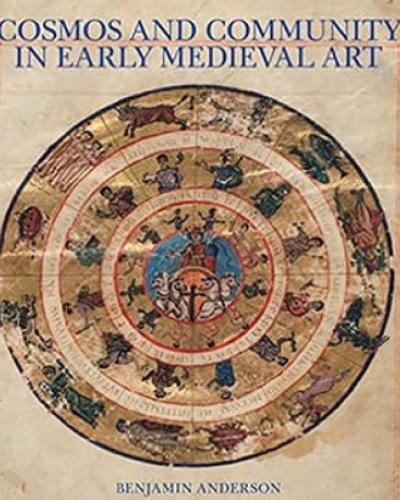
Composing the World: Harmony in the Medieval Platonic Cosmos
"We can hear the universe!" This was the triumphant proclamation at a February 2016 press conference announcing that the Laser Interferometer Gravity Observatory (LIGO) had detected a "transient gravitational-wave signal." What LIGO heard in the morning hours of September 14, 2015 was the vibration of cosmic forces unleashed with mind-boggling power across a cosmic medium of equally mind-boggling expansiveness: the transient ripple of two black holes colliding more than a billion years ago. The confirmation of gravitational waves sent tremors through the scientific community, but the public imagination was more captivated by the sonic translation of the cosmic signal, a sound detectable only through an act of carefully attuned listening. As astrophysicist Szabolcs Marka remarked, "Until this moment, we had our eyes on the sky and we couldn't hear the music. The skies will never be the same."
Taking in hand this current "discovery" that we can listen to the cosmos, Andrew Hicks argues that sound--and the harmonious coordination of sounds, sources, and listeners--has always been an integral part of the history of studying the cosmos. Composing the World charts one constellation of musical metaphors, analogies, and expressive modalities embedded within a late-ancient and medieval cosmological discourse: that of a cosmos animated and choreographed according to a specifically musical aesthetic. The specific historical terrain of Hicks' discussion centers upon the world of twelfth-century philosophy, and from there he offers a new intellectual history of the role of harmony in medieval cosmological discourse, a discourse which itself focused on the reception and development of Platonism.
Hicks illuminates how a cosmological aesthetics based on the "music of the spheres" both governed the moral, physical, and psychic equilibrium of the human, and assured the coherence of the universe as a whole. With a rare convergence of musicological, philosophical, and philological rigor, Hicks presents a narrative tour through medieval cosmology with reflections on important philosophical movements along the way, raising connections to Cartesian dualism, Uexküll's theoretical biology, and Deleuze and Guattari's musically inspired language of milieus and (de)territorialization. Hicks ultimately suggests that the models of musical cosmology popular in late antiquity and the twelfth century are relevant to our modern philosophical and scientific undertakings. Impeccably researched and beautifully written, Composing the World will resonate with a variety of readers, and it encourages us to rethink the role of music and sound within our greater understanding of the universe.
Palmyra 1885: The Wolfe Expedition and the Photographs of John Henry Haynes
Home to the legendary Queen Zenobia, the Syrian oasis of Palmyra – known as ‘the Pearl of the Desert’ – was one of the most important cultural centres of the ancient world. A key stop on the Silk Road, it was a vital link between the East and the West, and a prize fought over by successive conquering armies.
European adventurers began exploring Palmyra’s priceless Roman ruins in the 17th century, but it wasn’t until the advent of photography in the 19th century that the public became aware of its scale and majesty. In 1885, the sight of Palmyra astounded members of the Wolfe Expedition as they journeyed home from Mesopotamia. The group’s photographer, John Henry Haynes, documented the monumental temples, tombs and colonnades in more than a hundred invaluable images.
Since then, Haynes and his work have largely been forgotten, and the forces of the self-styled Islamic State have destroyed the key monuments of this world-renowned site, including the glorious Temple of Bel. Haynes’s images of Palmyra – published here for the first time – are all the more poignant.
Imagining the Jew in Anglo-Saxon Literature and Culture
Title:
Imagining the Jew in Anglo-Saxon Literature and Culture
Editor:
Samantha Zacher
Publisher:
University of Toronto Press
Year:
2016
Most studies of Jews in medieval England begin with the year 1066, when Jews first arrived on English soil. Yet the absence of Jews in England before the conquest did not prevent early English authors from writing obsessively about them. Using material from the writings of the Church Fathers, contemporary continental sources, widespread cultural stereotypes, and their own imaginations, their depictions of Jews reflected their own politico-theological experiences.
The thirteen essays in Imagining the Jew in Anglo-Saxon Literature and Culture examine visual and textual representations of Jews, the translation and interpretation of Scripture, the use of Hebrew words and etymologies, and the treatment of Jewish spaces and landmarks. By studying the “imaginary Jews” of Anglo-Saxon England, they offer new perspectives on the treatment of race, religion, and ethnicity in pre- and post-conquest literature and culture.
The Ethical Dimension of the 'Decameron'
Both a passionate denunciation of masculinist readings of the Decameron and a meticulous critique of previous feminist analyses, Marilyn Migiel's A Rhetoric of the Decameron offers a sophisticated re-examination of the representations of women, men, gender identity, sexuality, love, hate, morality, and truth in Boccaccio's masterpiece. The Decameron stages an ongoing, dynamic, and spirited debate about issues as urgent now as in the fourteenth century - a debate that can only be understood if the Decameron's rhetorical objectives and strategies are completely reconceived.
Addressing herself equally to those who argue for a proto-feminist Boccaccio - a quasi-liberal champion of women's autonomy - and to those who argue for a positivistically secure historical Boccaccio who could not possibly anticipate the concerns of the twenty-first century, Migiel challenges readers to pay attention to Boccaccio's language, to his pronouns, his passives, his echolalia, his patterns of repetition, and his figurative language. She argues that human experience, particularly in the sexual realm, is articulated differently by the Decameron's male and female narrators, and refutes the notion that the Decameron offers an undifferentiated celebration of Eros. Ultimately, Migiel contends, the stories of the Decameron suggest that as women become more empowered, the limitations on them, including the threat of violence, become more insistent.
Group Identity and Religious Individuality in Late Antiquity
To understand the past, we necessarily group people together and, consequently, frequently assume that all of its members share the same attributes. In this ground-breaking volume, Eric Rebillard and J?rg R?pke bring renowned scholars together to challenge this norm by seeking to rediscover the individual and to explore the dynamics between individuals and the groups to which they belong.
Zayd
Although Muhammad had no natural sons who reached the age of maturity, Islamic sources report that he adopted a man named Zayd shortly before receiving his first revelation. This "son of Muhammad" was the Prophet's heir for the next fifteen or twenty years. He was the first adult male to become a Muslim and the only Muslim apart from Mu?ammad whose name is mentioned in the Qur'an. Eventually, Mu?ammad would repudiate Zayd as his son, abolish the institution of adoption, and send Zayd to certain death on a battlefield in southern Jordan.
Curiously, Zayd has remained a marginal figure in both Islamic and Western scholarship. David S. Powers now attempts to restore Zayd to his rightful position at the center of the narrative of the Prophet Muhammad and the beginnings of Islam. To do so, he mines traces left behind in commentaries on the Qur'an, in biographical dictionaries, and in historical chronicles, reading these sources against analogues in the Hebrew Bible. Powers demonstrates that in the accounts preserved in these sources, Zayd's character is modeled on those of biblical figures such as Isaac, Ishmael, Joseph, and Uriah the Hittite. This modeling process was deployed by early Muslim storytellers to address two key issues, Powers contends: the bitter conflict over succession to Mu?ammad and the key theological doctrine of the finality of prophecy. Both Zayd's death on a battlefield and Mu?ammad's repudiation of his adopted son and heir were after-the-fact constructions driven by political and theological imperatives.
Transformations of Religious Practices in Late Antiquity
The eighteen papers collected in this volume - fifteen of which are published in English for the first time - explore the transformations of religious practices between the third and the fifth centuries in the Western part of the Roman Empire. They share an approach that privileges the study of processes and interactions and does not take for granted the categories and roles traditionally ascribed to social actors. A first group of papers focuses on the sermons and letters of Augustine of Hippo. These texts are precious evidence for balancing the clerical perspective that characterizes most of our sources and can thus shed a different light on the problem of Christianization. The second group collects papers that propose to shift attention from the construction of heresies to that of orthodoxy through the case-study of the controversy of Augustine against Pelagius and Julian of Eclanum. A last group present studies that look at the complex relation between burial and religion, with a particular focus on the role played by the church in the organization of the burial of Christians in Late Antiquity.
Imagining the Passion in a Multiconfessional Castile
Recent research into the texts, practices, and visual culture of late medieval devotional life in western Europe has clearly demonstrated the centrality of devotions to Christ’s Passion. The situation in Castile, however, could not have been more different. Prior to the final decades of the fifteenth century, individual relationships to Christ established through the use of “personalized” Passion imagery simply do not appear to have been a component of Castilian devotional culture.
In Imagining the Passion in a Multiconfessional Castile, Cynthia Robinson argues that it is necessary to reorient discussions of late medieval religious art produced and used in Castile, placing Iberian devotional art in the context of Iberian devotional practice. Instead of focusing on the segregation of the religious lives of members of late medieval Iberia’s much-discussed “Three Confessions” (Judaism, Christianity, and Islam), Robinson offers concrete evidence of the profound impact of each sect on the other two.
Imagining the Passion in a Multiconfessional Castile ranges across traditional disciplinary and cultural divides. Robinson considers altarpieces that differ radically from their European contemporaries; architectural ornament; a rare series of narratives of Christ’s life; indulgenced prayers; Muslim and Jewish mystical texts; lives, hours, devotions, and Psalters of and to the Virgin which appear to be uniquely Iberian and find resonances in both Hebrew and Arabic mystical literature; sacred gardens and trees in both textual and visual culture from Muslim, Christian, and Jewish contexts; and preaching manuals written by converted Jews. Together, these texts and images offer striking evidence of the plurality of late medieval Iberian religious life, both within the supposed boundaries of a specific religion and in terms of each culture’s relationship with the other.
Giving Voice to Love Song and Self-Expression from the Troubadours to Guillaume de Machaut
Title:
Giving Voice to Love: Song and Self-Expression from the Troubadours to Guillaume de Machaut
Author:
Judith Peraino
Publisher:
Oxford University Press
Year:
2011
Grafting musicology and literary studies together in an unprecedented manner, Giving Voice to Love: Song and Self-Expression from the Troubadours to Guillaume de Machaut investigates French and Occitan "courtly love" songs from the twelfth to fourteenth centuries and explores the paradoxical relationship of music and self-expression in the Middle Ages. While these love songs conceived and expressed the autonomous subject - the lyric "I" represented by a single line of melody - they also engaged highly conventional musical and poetic language, and required performers and scribes for their transmission. This paradox was understood by the poets and became the basis for irony, parody, and intertextual referencing, which instilled the lyrics with a characteristic self-consciousness that reflected the unstable conditions for self-expression.
Sanctity and Pornography in Medieval Culture: On the Verge
Title:
Sanctity and Pornography in Medieval Culture: On the Verge
Authors:
Cary Howie and William Burgwinkle
Publisher:
Manchester University Press
Year:
2011
Christians and their Many Identities in Late Antiquity, North Africa, 200-450 CE
In Christians and Their Many Identities in Late Antiquity, North Africa, 200?450 CE, ?ric Rebillard explores how Christians in North Africa between the age of Tertullian and the age of Augustine were selective in identifying as Christian, giving salience to their religious identity only intermittently. By shifting the focus from groups to individuals, Rebillard more broadly questions the existence of bounded, stable, and homogeneous groups based on Christianness.
The Development of Islamic Law and Society in the Maghrib
The eleven essays in this collection treat the application of Islamic law in the Maghrib in the period between 1100 and 1500. The essays examine family law cases involving legal minority, guardianship, divorce, inheritance, bequests and endowments. Cumulatively, the cases bear witness to the effectiveness and efficiency of the Islamic legal system in this period.
The Cambridge Companion to Medieval English Culture.
Linked series of essays by experts on the literary, political, legal, literary, and artistic culture of medieval England, including its afterlife.
The Gendered Palimpsest: Women, Writing, and Representation in Early Christianity
Books and bodies, women and books, and the malleable word and flesh lie thematically at the center of The Gendered Palimpsest, which explores the roles that women played in the production, reproduction, and dissemination of early Christian books, and how the representation of female characters was contested through the medium of writing and copying. The book is organized in two sections, the first of which treats historical questions: To what extent were women authors, scribes, book-lenders, and patrons of early Christian literature? How should we understand the representation of women readers in ascetic literature? The second section of the book turns to text-critical questions: How and why were stories of women modified in the process of copying? And how did debates about asceticism--and, more specifically, the human body--find their way into the textual transmission of canonical and apocryphal literature?
Language and Ritual in Sabellic Italy
The Iguvine Tables are among the most invaluable documents of Italic linguistics and religion. Seven bronze tablets discovered in 1444 in the Umbrian town of Gubbio, they record the rites and sacral laws of a priestly brotherhood, the Fratres Atiedii. Taking an interdisciplinary approach that combines philological and linguistic, as well as ritual analysis, Michael Weiss not only addresses the many interpretive cruces that have puzzled scholars for a century and a half, but also constructs a coherent theory of the entire ritual performance described on Tables III and IV. In addition, Weiss sheds light on many questions of Roman ritual practice and places the Iguvine Tables in their broader Italic and Indo-European contexts.
Claustrophilia: the Erotics of Enclosure in Medieval Literature
If ours is a cultural moment intensely fascinated with enclosed space?the cubicles of our workplaces, the confessionals of our churches, the bedrooms of reality television, and all the various closets we come out of and retreat into ? our fascination isn?t entirely new. This book argues that the religious literature of the late Middle Ages articulates with great subtlety and vividness the extent to which all being is enclosed being. In other words, we?re all in the closet, and that might be a good thing. Through extended readings of English, French, and Italian writers of the thirteenth and fourteenth centuries, Claustrophilia shows that medieval enclosures actually make room for desires and communities that a poetics of pure openness would exclude. When God holds and confines, revelation is in the boundaries and not beyond them. Accordingly, this book says, love your closet; it is only through what holds and defines us that we can know and love the world.
Preaching the Converted: The Style and Rhetoric of the Vercelli Book Homilies
The Vercelli Book is one of the oldest surviving collections of Old English homilies and poems, compiled in England in the tenth century. Preaching the Converted provides a sustained literary analysis of the book?s prose homilies and demonstrates that they employ rhetorical techniques commonly associated with vernacular verse. The study argues that the dazzling textual complexity of these homilies rivals the most accomplished examples of Old English poetry. Highlighting the use of word play, verbal and structural repetition, elaborate catalogues, and figurative language, Samantha Zacher's study of the Vercelli Book fills a gap in the history of English preaching by foregrounding the significance of these prose homilies as an intermediary form. Also analyzing the Latin and vernacular sources behind the Vercelli texts to reveal the theological and formal interests informing the collection as a whole, Preaching the Converted is a rigorous examination of Old English homiletic rhetoric and poetics.
The Care of the Dead in Late Antiquity
In this translation of Religion et S?pulture: L'Eglise, les vivants et les morts dans l'Antiquit? tardive, Rebillard fundamentally changes our understanding of early Christianity. The Care of the Dead in Late Antiquity will force scholars of the period to rethink their assumptions about early Christians as separate from their pagan contemporaries in daily life and ritual practice.
Body Against Soul: Gender and Sowlehele in Middle English Allegory
The topic of this book is one that runs through all of Western history and remains of primary interest to modern theorists, "how ''my' body relates to 'me.'" In the allegorical tradition traced by this study, a male person could imagine himself as a being populated by female personifications, because Latin and Romance languages tended to gender abstract nouns as female. However, since Middle English had ceased to inflect abstract nouns as male or female, writers were free to gender abstractions like "Will" or "Reason" any way they liked. This permitted some psychological allegories to avoid the representational tension caused by placing a female soul inside a male body, instead creating surprisingly queer same-sex inner worlds. The didactic intent driving sowlehele ("soul-heal") is, it turns out, complicated by the erotics of the struggle to establish a hierarchy of the self's inner powers.
Power in the Portrayal: Representations of Jews and Muslims in Eleventh- and Twelfth-Century Islamic Spain
Power in the Portrayal unveils a fresh and vital perspective on power relations in eleventh- and twelfth-century Muslim Spain as reflected in historical and literary texts of the period.
A Rhetoric of the Decameron
Both a passionate denunciation of masculinist readings of the Decameron and a meticulous critique of previous feminist analyses, Marilyn Migiel's A Rhetoric of the Decameron offers a sophisticated re-examination of the representations of women, men, gender identity, sexuality, love, hate, morality, and truth in Boccaccio's masterpiece. The Decameron stages an ongoing, dynamic, and spirited debate about issues as urgent now as in the fourteenth century - a debate that can only be understood if the Decameron's rhetorical objectives and strategies are completely reconceived.
Addressing herself equally to those who argue for a proto-feminist Boccaccio - a quasi-liberal champion of women's autonomy - and to those who argue for a positivistically secure historical Boccaccio who could not possibly anticipate the concerns of the twenty-first century, Migiel challenges readers to pay attention to Boccaccio's language, to his pronouns, his passives, his echolalia, his patterns of repetition, and his figurative language. She argues that human experience, particularly in the sexual realm, is articulated differently by the Decameron's male and female narrators, and refutes the notion that the Decameron offers an undifferentiated celebration of Eros. Ultimately, Migiel contends, the stories of the Decameron suggest that as women become more empowered, the limitations on them, including the threat of violence, become more insistent.

